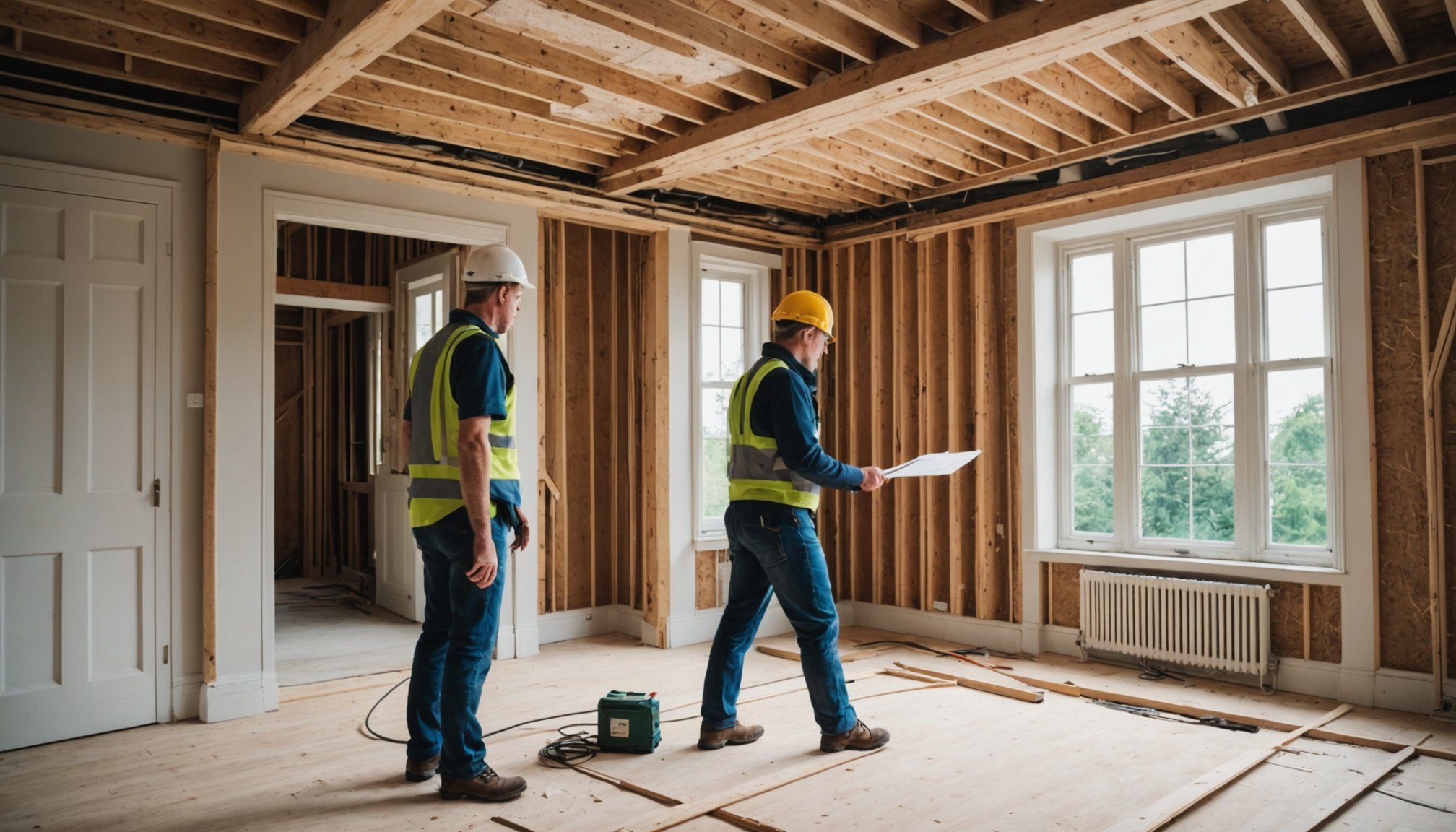Overview of Energy Efficiency in Home Renovations
In the context of UK home renovations, integrating energy efficiency is not just a trend but a necessity. Amidst rising energy costs and growing environmental concerns, prioritising sustainability during home renovations can significantly reduce energy consumption. In the UK, there are specific regulations and standards that homeowners need to consider. Regulations such as the Energy Performance Certificate (EPC) and Minimum Energy Efficiency Standards (MEES) play a crucial role in ensuring that homes meet required efficiency levels. These standards guide homeowners on how to make their properties more energy-efficient.
Investing in energy-efficient renovations comes with numerous long-term benefits. Apart from reducing carbon footprints, such investments lead to lower energy bills, increasing the overall value of the property. Enhanced insulation, solar panel installation, and efficient HVAC systems not only make homes more comfortable but also ensure compliance with national sustainability goals. Homeowners get the dual advantage of contributing to a greener planet while reaping financial rewards over time.
Have you seen this : Top Financing Strategies for New Property Investors in the UK: Unlocking Your Investment Potential
Ultimately, making informed choices about energy efficiency during home renovations can significantly impact both environmental sustainability and household finances. It’s a strategic move towards a more sustainable future, positively affecting the community at large.
Insulation Techniques for Improved Energy Efficiency
Enhancing energy savings starts with optimising insulation. The right choice of insulation materials significantly impacts thermal performance. Various options exist, each with unique properties and effectiveness.
In parallel : Top Sustainable Landscaping Strategies for UK Homeowners to Boost Property Value
For instance, fibreglass insulation, known for its affordability and efficiency, effectively reduces heat flow. It’s often used in attics and walls. Meanwhile, spray foam insulation expands to fill gaps, offering superior sealing capability, albeit at a higher cost.
Proper insulation drastically improves heat retention, cutting down energy bills. In cold climates, it ensures warmth during winters, while preventing excessive heat during summers. The key benefits include not only energy savings but enhanced comfort and a reduced carbon footprint.
Several case studies illustrate successful insulation upgrades. In the UK, a project in Sheffield replaced outdated materials in a post-war home, achieving a remarkable 20% reduction in heating costs. Similar upgrades in London terraced houses have shown significant thermal improvements, underscoring the crucial role of comprehensive insulation techniques.
In summary, understanding the effectiveness of different insulation materials and their application is crucial in promoting energy efficiency. It not only leads to substantial cost savings but also contributes to environmental sustainability.
Choosing Energy-Efficient Appliances
The modern consumer is increasingly attuned to the benefits of energy-efficient appliances. For those seeking sustainable cost savings, understanding energy ratings is crucial. These ratings, often indicated by star symbols, reveal how an appliance performs in terms of energy conservation. A higher star rating typically signifies superior efficiency and, consequently, better performance in reducing electricity consumption.
Eco-friendly options are aplenty, catering to diverse household needs. Refrigerators, washing machines, and dishwashers with high energy ratings not only lower your carbon footprint but also reduce monthly utility bills. For instance, opting for an energy-efficient refrigerator can save hundreds over its lifespan compared to a conventional unit. Similarly, front-load washing machines tend to be more energy-efficient than top-load models.
The long-term cost savings of energy-efficient appliances are noteworthy. Households can expect to save upwards of 30% on utility bills annually by swapping out old appliances for new, energy-conscious ones. While eco-friendly appliances might come with a higher upfront cost, the financial benefits realized through reduced energy consumption make them a smart investment for both the environment and the wallet. With energy efficiency as a priority, consumers can enjoy sustainable living and financial peace of mind.
Incorporating Renewable Energy Sources
In the UK, there is an ever-increasing push towards adopting renewable energy sources for homeowners. Options like solar panels, wind turbines, and ground source heat pumps are particularly popular. These technologies promise not only environmental benefits but also energy independence, reducing reliance on fossil fuels.
Solar panels are the go-to option for many, offering a straightforward way to harness sunlight for electricity. With the UK’s government-backed incentives like the Smart Export Guarantee, homeowners can actually earn money by feeding surplus energy back into the grid. This initiative not only makes the initial investment more attractive but also promotes widespread adoption of renewable energy sources.
These government programs are crucial for encouraging the shift. They often include grants or rebates that lower installation costs, making renewable energy more accessible to the average homeowner. Over time, the reliance on traditional energy sources like coal and natural gas is expected to decrease, further moving the UK towards its sustainability goals.
By integrating these renewable sources, homeowners are taking proactive steps towards a sustainable future, showcasing how such measures can be both financially rewarding and environmentally responsible.
Leveraging Government Incentives and Grants
Navigating the landscape of government incentives and grants can seem daunting, but understanding these opportunities is crucial for homeowners seeking financial assistance. Various schemes exist, each with distinct eligibility criteria tailored to promote energy efficiency, renewable energy installations, or structural improvements.
Government incentives come in various forms, including tax credits, rebates, and direct financial aid. To identify eligible programs, homeowners must review local and national offerings. Familiarity with specific eligibility requirements—often income-based, location-specific, or contingent upon certain energy-saving measures—facilitates a focused application approach.
Once potential grants and incentives are identified, navigating the application process requires diligence. Applicants should gather necessary documentation, such as proof of income or property details, to bolster their applications. Additionally, maintaining communication with administering bodies ensures clarity and compliance throughout the process.
Success stories abound, illustrating the tangible benefits of these programs. Homeowners have successfully utilized grants to offset costs, making sustainable home upgrades more accessible. For example, in regions offering solar incentives, households have significantly reduced energy expenses by installing renewable systems, reflecting the holistic benefits of leveraging available financial assistance. By pursuing government-supported avenues, homeowners not only gain short-term financial relief but also contribute to broader environmental goals.
Overcoming Common Challenges in Energy-Efficient Renovations
Renovation projects focusing on energy efficiency often encounter a set of typical challenges that require adept problem-solving. Identifying these obstacles early can significantly streamline the process. Common hurdles include budget constraints, unforeseen structural issues, and finding skilled contractors familiar with eco-friendly practices.
One key strategy for mitigating these challenges is thorough pre-planning. By conducting detailed assessments, potential problems can be foreseen and strategized against. It’s crucial to factor in an extra budget for unexpected issues, as these are almost inevitable in renovation projects.
Another effective approach is prioritizing tasks. Focus on changes that offer the greatest energy efficiency improvements first, such as insulation, window replacements, and the installation of energy-efficient appliances. Completing these can lead to substantial long-term savings.
Expert recommendations emphasize the importance of engaging professionals who specialize in sustainable renovations. Their expertise ensures that the latest and most effective methods are employed, avoiding common pitfalls.
In conclusion, while energy-efficient renovations pose challenges, with careful planning and strategic execution, these obstacles can be effectively navigated, ensuring a successful and environmentally sustainable project outcome.
Assessing Costs and Calculating Benefits
Understanding the financial implications of energy-efficient renovations is essential for effective planning. A detailed cost assessment entails evaluating both upfront costs and the potential for long-term savings. Initial expenditures may seem daunting, but when broken down into specific components, such as material costs or contractor fees, the picture becomes clearer.
Energy savings over time play a crucial role in determining the overall value of an investment. Calculating Return on Investment (ROI) provides an insightful perspective. To determine ROI, subtract total costs from energy savings over the renovation’s expected lifespan, and then divide by initial investments. A high ROI signifies that benefits significantly surpass costs.
The journey of incorporating energy-efficient strategies is often supported by various tools and resources. Reliable cost estimation software and budgeting apps can help in forecasting expenses accurately. Additionally, consulting databases offering information on government incentives or rebates can ease the financial burden significantly.
- Understand upfront versus long-term costs.
- Capture significant savings through energy reduction.
- Utilize estimation software for accurate budgeting.
Assessing costs and calculating benefits ensures that individuals are well-informed, making strategic decisions that enable substantial energy savings while achieving their desired ROI.











